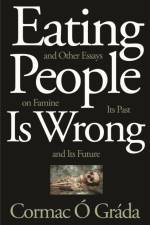av Cormac O Grada
557
"The two world wars were undoubtedly two of the most catastrophic events in human history, not just for those who actually fought in them, but for untold millions of civilians. And even though the wars' superlativeness is unquestioned, our understanding of exactly how bad the civilian costs were is limited. Although the numbers are better for the two wars than for most earlier wars, gaps and uncertainties remain. States went to great lengths to record military casualties, but civilian fatalities often went uncounted, and figures were often deliberately obscured. In this book, renowned economic historian Cormac O Grada aims to set the record straight, establishing a figure for civilian fatalities that reveals much about the nature of modern war. The book builds on earlier estimates of casualties from a range of causes, some reliable, some approximate at best, and warns against spurious precision when approximations are impossible. For example, while the human toll of the Jewish Holocaust is generally agreed to have been about 6 million, the tolls of two other war genocides, those of the Armenian community in Turkey during World War I and of the European Roma community during World War II, cannot be determined with any precision. (Scholarly estimates of these range from 0.6 to 1.2 million, and from "at least 130,000" to "between 250,000 and 500,000.") During World War II Chinese civilians faced both a civil war and Japanese occupation, and no estimate of the resulting civilian deaths, which range from an implausibly low 2.5 million to 20 million, is reliable. The book shows that the single biggest cause of civilian deaths during the two wars were famines, some of which are familiar and well-documented, while others have attracted research only recently, and a few await systematic analysis. The book covers these as well as genocides, particularly the Jewish Holocaust, and deaths from aerial bombing, and shows how in each of these categories the numbers have been controversial and contested. Most of the book deals with death, but it contains accounts too of the tens of millions of displaced persons and refugees and forced labourers, of civilian trauma, and of sexual violence and other atrocities. In the end O Grada argues that the two world wars cost at least 45 to 50 million civilian lives, almost double the cost in military lives. Addressing the uncertainties and inaccuracies in civilian casualties, the book shows the failings of international law and gives a vital and harrowing understanding of the true cost of war"--






